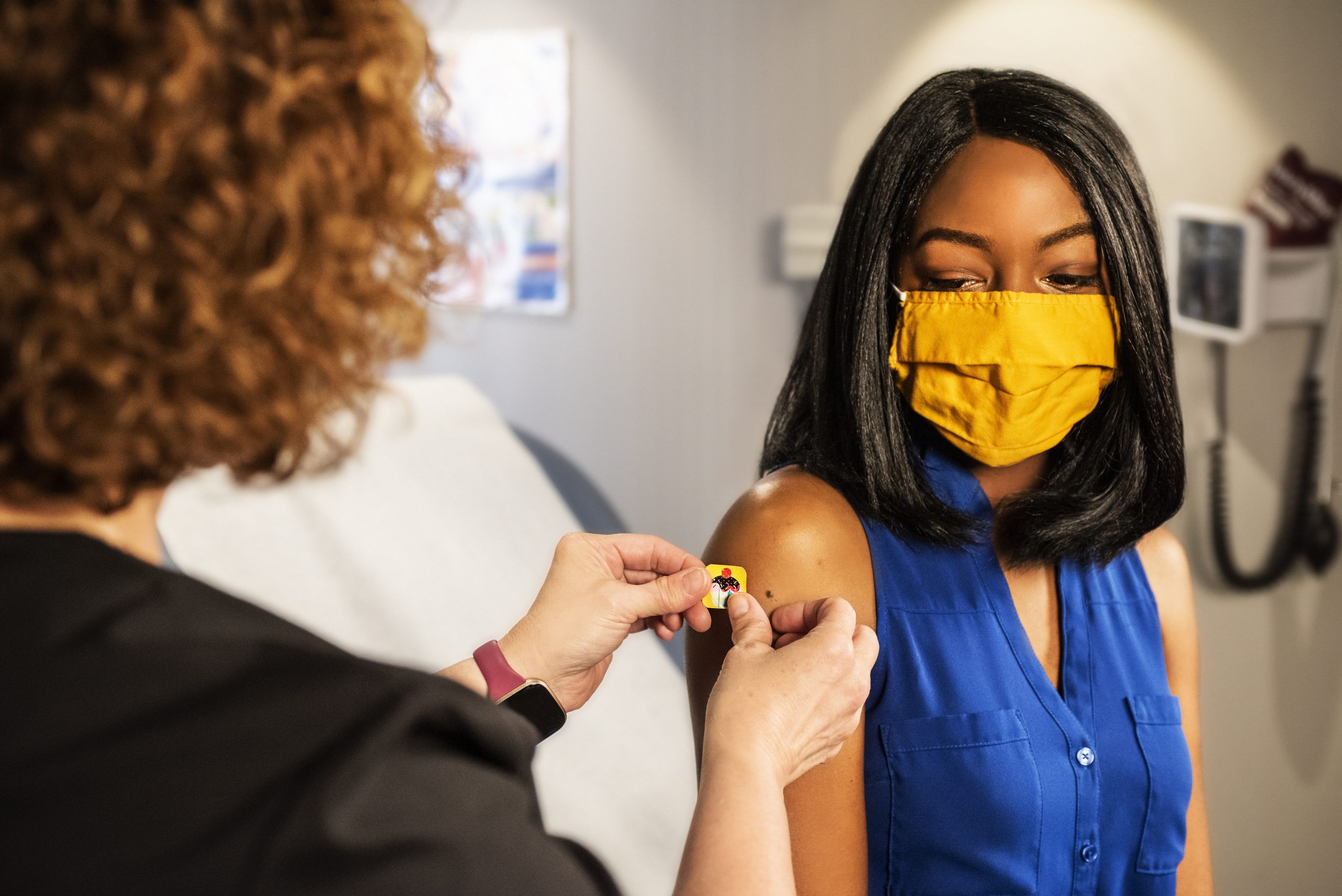“Picture this – a world without vaccines! A scary thought, isn’t it? From polio to measles, smallpox to tetanus, the list of deadly diseases that once ravaged humanity is endless. But thanks to vaccination, we’ve made dramatic progress in combatting and containing these illnesses. In fact, vaccines have saved millions of lives since they were introduced over 200 years ago. Yet, despite their proven success and safety record, some people are still skeptical about immunization. So today’s blog post is all about busting myths and understanding the science behind vaccination – because knowledge is power when it comes to protecting our health!”
What are vaccines and how do they work?
Vaccines are products that help protect against specific diseases. They work by stimulating the body’s immune system to produce antibodies, which then provide protection against the disease.
Vaccines are usually given as injections, but can also be given orally (by mouth) or nasally (in the nose). The type of vaccine and the age of the person being vaccinated will determine how the vaccine is given. For example, infants and young children are typically vaccinated with an injection, while older children and adults may receive either an injection or a nasal spray vaccine.
Vaccines are made from different types of viruses, bacteria, or toxins (poisons). The viruses or bacteria used in vaccines are either killed (inactivated) or weakened so that they can’t cause disease. Toxoids are poisons that have been turned into harmless substances. These components are then used to help the body build immunity against a particular disease.
The immunity built by vaccines can last for many years. However, some vaccines need to be given on a regular basis to ensure continued protection against disease. For example, people who receive the flu vaccine every year will be better protected against influenza than those who do not get vaccinated at all or only get vaccinated occasionally.
The history of vaccines
The history of vaccines is a long and complicated one. Vaccines have been around for centuries, with the first recorded use dating back to the 10th century. The early history of vaccines is rife with trial and error, as scientists attempted to figure out how best to protect people from deadly diseases.
The modern era of vaccines began in the late 18th century, when English physician Edward Jenner developed the smallpox vaccine. This was a major breakthrough in medical science, as smallpox was a highly contagious and often deadly disease. Jenner’s work laid the foundation for future vaccine development, and his discovery is still considered one of the most important medical advances of all time.
Since Jenner’s groundbreaking work, vaccines have been developed for a wide variety of diseases. In the 20th century alone, vaccines were developed for polio, measles, mumps, rubella, and many other illnesses. Thanks to these advances, childhood mortality rates have plummetted in developed countries. In fact, immunization is now considered one of the most successful public health interventions in history.
Today, scientists are working on developing new and improved vaccines for a variety of diseases. With each new discovery, we inch closer to a world where deadly diseases are nothing more than a distant memory.
The benefits of vaccination
Vaccination is one of the most effective ways to protect yourself and your family from serious diseases. Vaccines work by preparing your body in advance to recognize and fight off bacteria and viruses before they make you sick.
When you get vaccinated, you’re not just protecting yourself—you’re also helping to protect the people around you, especially those who are more vulnerable to serious illnesses. Vaccination is especially important for infants, young children, older adults, and people with weakened immune systems.
The benefits of vaccination go beyond protecting individual patients—vaccines also help to prevent the spread of disease within communities. For example, vaccines that are given to children can help reduce the spread of disease to other vulnerable members of the population, such as pregnant women or elderly adults.
Immunization programs have been successful in reducing the incidence of many diseases, including polio, measles, diphtheria, pertussis (whooping cough), and rubella (German measles). As a result of immunization programs, these diseases are now much less common in the United States than they were in previous decades.
Common misconceptions about vaccines
There are many myths and misconceptions about vaccines circulating on social media and the internet. Unfortunately, this misinformation can lead to parents making decisions about vaccinating their children based on fear or misunderstanding. Here are some common misconceptions about vaccines:
1. Vaccines cause autism.
This is one of the most persistent myths about vaccines, despite being debunked by numerous studies. There is no link between vaccines and autism.
2. Vaccines are not effective.
Vaccines are highly effective at protecting people from disease. For example, the measles vaccine is 95% effective at preventing measles infection.
3. Vaccines are unsafe.
Vaccines undergo rigorous safety testing before they are approved for use. Adverse reactions to vaccines are rare and usually mild, such as a sore arm or fever. Serious side effects are extremely rare.
Why some people choose not to vaccinate
There are a variety of reasons why some people choose not to vaccinate. Some people may be concerned about the safety of vaccinations, particularly if they have heard of rare but serious side effects. Others may believe that vaccinations are not necessary because they do not personally know anyone who has contracted a disease that could be prevented by vaccination. And still others may have religious or philosophical beliefs that lead them to question the use of vaccines.
It’s important to remember that vaccines are safe and effective. The risks posed by diseases like measles, polio, and whooping cough are far greater than the risks associated with vaccination. Vaccines save lives, and everyone should have the opportunity to be vaccinated.
The importance of herd immunity
Herd immunity is a form of indirect protection from infectious diseases. When a sufficient proportion of a population is vaccinated against a disease, it becomes very difficult for an outbreak of that disease to occur, because there are not enough susceptible people remaining in the population to sustain it. Herd immunity is particularly important for protecting vulnerable members of the population who cannot be vaccinated, such as infants and people with certain medical conditions.
Vaccination is the most effective way to create herd immunity. When enough people are vaccinated, it not only protects them as individuals, but also reduces the likelihood that they will spread disease to others. Vaccination has been one of the most successful public health interventions in history, and has played a key role in eradicating or controlling many devastating diseases such as smallpox, polio, and measles.
Vaccine-preventable diseases
Vaccination is one of the most effective ways to prevent disease. It protects people of all ages from serious illnesses, including those that can lead to death.
Vaccine-preventable diseases are caused by viruses, bacteria, or other organisms that can be prevented by vaccination. Vaccines work by stimulating the body’s immune system to produce antibodies to a particular disease. The antibodies then help protect people against infection by the organism that causes the disease.
There are many different vaccines available, and more are being developed as our understanding of diseases and how they are spread improves. Some vaccines are given as a single dose, while others require a series of shots over time. It is important to follow the recommended vaccine schedule to ensure maximum protection.
Vaccines are safe and effective, and they have been used for decades to protect against a variety of diseases. Serious side effects from vaccines are rare, and when they do occur, they are usually mild and temporary. The risks posed by vaccine-preventable diseases far outweigh any potential risks from vaccination.
Vaccination is one of the best ways to protect yourself and your family from serious illness. When everyone in a community is vaccinated against a disease, it reduces the spread of that disease and helps protect those who cannot be vaccinated for medical reasons. Vaccination saves lives!
The safety and efficacy of vaccines
The safety and efficacy of vaccines are well-established. Vaccines are rigorously tested in clinical trials before they are licensed for use, and they are continually monitored for safety and efficacy once they are in use.
Vaccines are safe. The most common side effects from vaccination are usually mild and go away quickly. Serious side effects from vaccines are extremely rare.
Vaccines are effective at preventing disease. They work by provoking the body’s immune system to produce antibodies that protect against infection. Vaccines have been responsible for the eradication of smallpox and the dramatic reduction in the incidence of other diseases, such as polio, diphtheria, and pertussis.
The benefits of vaccination far outweigh the risks. Vaccination is one of the most cost-effective ways to prevent disease, saving both lives and healthcare costs.
Conclusion
Vaccination is one of the most important preventive measures to protect people against infectious diseases. There is a wealth of scientific evidence that supports this claim, showing that immunization not only saves lives but also has the potential to eradicate some of the most devastating illnesses in our society. We should all do our part to stay informed about vaccinations and make sure we are up-to-date on the latest recommendations from credible sources such as healthcare professionals and public health organizations. By doing so, together we can ensure better health for everyone both now and in the future.




